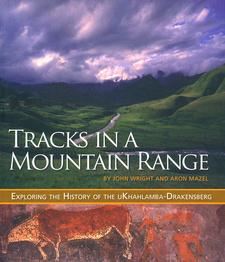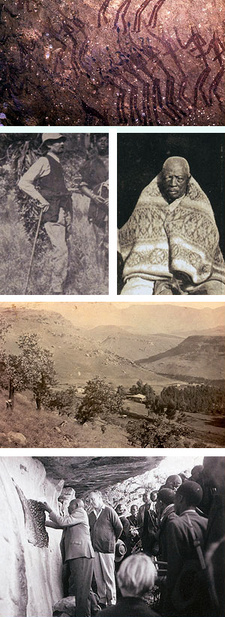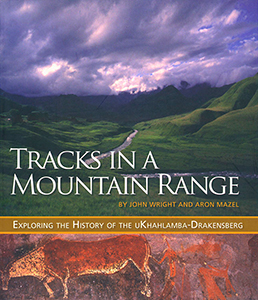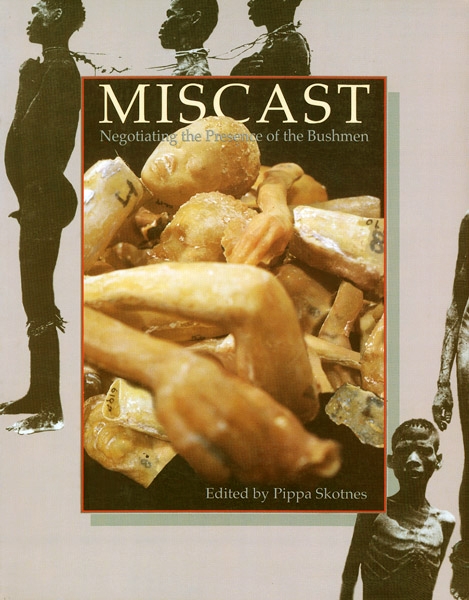Tracks in a Mountain Range. Exploring the History of the uKhahlamba-Drakensberg, by Aron Mazel and John Wright

Tracks in a Mountain Range. Exploring the History of the uKhahlamba-Drakensberg, by Aron Mazel and John Wright. Witwatersrand University Press. Johannesburg, South Africa 2007. ISBN 9781868144099 / ISBN 978-1-86814-409-9

Pictures from the book Tracks in a Mountain Range. Exploring the History of the uKhahlamba-Drakensberg (ISBN 9781868144099 / ISBN 978-1-86814-409-9)
From Aron Mazel's and John Wright's book, Tracks in a Mountain Range. Exploring the History of the uKhahlamba-Drakensberg, the following text is from the chapter "The subjugation of the Hlubi".
John Wright grew up in the foothills of the Drakensberg and has spent years hiking and riding in the mountains. He studied history at the University of Natal in Pietermaritzburg and the University of the Witwatersrand, Johannesburg. He lectured in the Department of History at the University of Natal and its successor institution, the University of KwaZulu-Natal, from 1971 to 2005. Since 2006 he has been a Senior Research Associate in History at the University of KwaZulu-Natal.
Aron Mazel was raised in Cape Town and studied archaeology at the University of Cape Town. Since 1979 he has undertaken extensive archaeological research into the hunter-gatherer history of the Thukela basin and the rock art of the Drakensberg. Posts he has held include Assistant Director of the Natal Museum in Pietermaritzburg and Director of the South African Cultural History Museum in Cape Town. He now teaches at the International Centre for Cultural and Heritage Studies, Newcastle University, UK.
THE CLOSING OF THE MOUNTAIN FRONTIER, 1870-1900
The subjugation of the Hlubi
The raids made by San and others into Natal had been an important factor in keeping the Drakensberg and its foothills beyond the full reach of colonial authority for at least thirty years. Another factor was the weakness of the Natal colonial government, which for many years did not have the resources to establish and maintain a firm presence in these remote and broken borderlands. This in turn was partly due to the reluctance of successive British imperial governments, with responsibilities for ruling an extensive empire, to spend more than a bare minimum on the administration of small and unimportant colonies such as Natal, or to support them in expansionist adventures. But by the late 1860s and early 1870s British policy in southern Africa was starting to become significantly more interventionist. Rising nationalist tensions between the major world powers were sharpening rivalries for control of empires and spheres of influence in the outer world. In southern Africa, Britain's new willingness to take action beyond the borders of the Cape and Natal showed up in its annexation of Basutoland in 1868 and of the newly discovered diamond fields round Kimberley in 1871. At another level, British imperial governments were becoming less concerned about restraining the colonial administrations in the Cape and Natal from siding with white colonists against the black communities whose land and labour they coveted. In Natal this became clear when, in 1873, a crisis blew up that involved the administration and the colonists in a confrontation with Langalibalele's Hlubi in their location under the Drakensberg. After their flight from the Zulu kingdom in 1848 and their settlement in the upper Bloukrans-Bushmans area in 1849, it took some years for the Hlubi under Langalibalele to re-establish their former prosperity but by the late 1850s they were well on the way to doing so. They had rebuilt their cattle herds, and numbers of young men were earning cash wages by working on local farms, or in the towns and villages of Natal. Some even sought work as far away as the Cape. Wealthier families bought ploughs and wagons, and by the early 1860s were producing a surplus of maize for sale in the colony. [...]
This is an excerpt from Tracks in a Mountain Range. Exploring the History of the uKhahlamba-Drakensberg, by Aron Mazel and John Wright.
Title: Tracks in a Mountain Range
Subtitle: Exploring the History of the uKhahlamba-Drakensberg
Authors: Aron Mazel, John Wright
Publisher: Witwatersrand University Press
Johannesburg, South Africa 2007
ISBN 9781868144099 / ISBN 978-1-86814-409-9
Paperback, 18 x 21 cm, 176 pages, many b/w and colour photos
Mazel, Aron und Wright, John im Namibiana-Buchangebot
Tracks in a Mountain Range. Exploring the History of the uKhahlamba-Drakensberg
Tracks in a Mountain Range. Exploring the History of the uKhahlamba-Drakensberg highlights the histories of the indigenous San hunter-gatherers, black farmers and European colonisers.
Miscast. Negotiating the Presence of the Bushmen
Miscast: Negotiating the Presence of the Bushmen explores the term "Bushman" and the relationships that gave rise to it.


